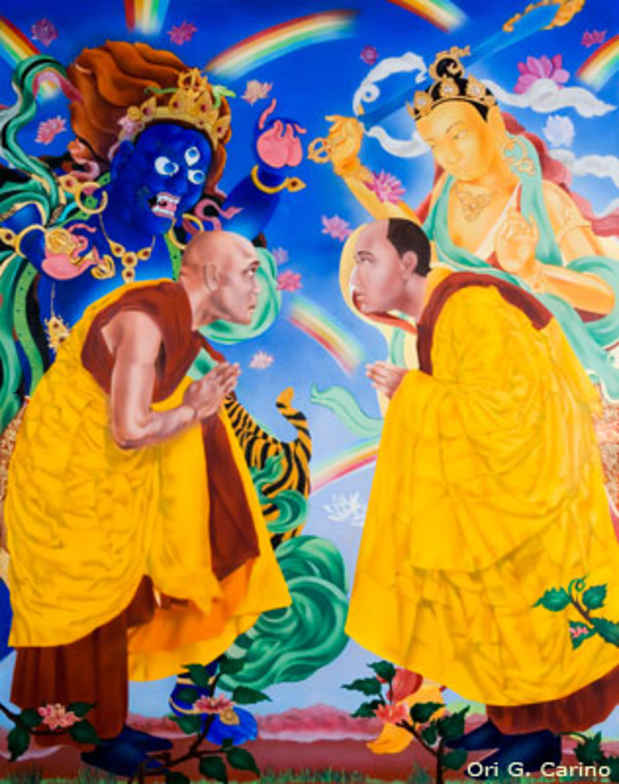Ori G. Carino Exhibition
Dean Project

This event has ended.
March 10, 1959. Artillery shells are smashing into the Potala Palace. You need to run, and you have perhaps ten minutes to decide what to take with you, over the Himalayas, down into India.
What the family of His Holiness the Dalai Lama decided to take was a set of 15 scroll paintings called the Tsongkapa Eighty. In more than 200 intricate scenes, these paintings relate the life story of a person that we believe will become just as important to the world as Jesus or Moses or Mohammed. The paintings did reach India, and were donated by His Holiness and his family to the Kalmyk Buddhist Temple in New Jersey, USA, since at the time this was one of the only Tibetan Buddhist centers outside of Tibet.
We’ve spent more than 15 years researching the paintings. We recovered the ancient manuscript by Jamyang Shepay Dorje (1648- 1721) which first described how the scenes should be painted, and translated it in full, comparing it with more than 50 other ancient biographies and texts (a copy with notes is shown at right). We located, in the Tsar’s library in St Petersburg, Russia, the original text of the Tsongkapa Eighty—which was written in the weeks following Je Tsongkapa’s passing from this world by his disciple Jamyang Kache (in 1419). We’ve translated and refined all the captions by comparing, with the cooperation of these institutions, later sets of the paintings held by Sera Monastery and the Istituto Lama Tzong Khapa of the FPMT. We’ve researched and written an extensive history of how the paintings developed over the centuries, using dozens of ancient Tibetan sources, including a history of the Kalmyk Temple and how the paintings arrived there—through eyewitness accounts and interviews with people like Professor Thubten Jigme Norbu, the older brother of His Holiness. We’ve sent a team of photographers to retrace Je Tsongkapa’s steps across Tibet, and produce a pictography of places dear to his heart: Olka, where he did his long retreat; Radreng,where he had the vision to write the Lamrim Chenmo (The Great Book on the Steps of the Path), and manyother holy sites. Some photos, like the famous one of the Potala at left, we’ve licensed from other
photographers.
We’ve compiled a definitive list of all of Je Tsongkapa’s writings, and all the major biographies of his life,even those which have gone missing over the centuries. We’ve carefully divided out all the 200 scenes,corrected and translated the captions, and created a definitive account of each year of his life, in text and
pictures.
Media
Schedule
from December 18, 2008 to February 14, 2009
Opening Reception on 2009-02-12 from 18:00 to 20:00